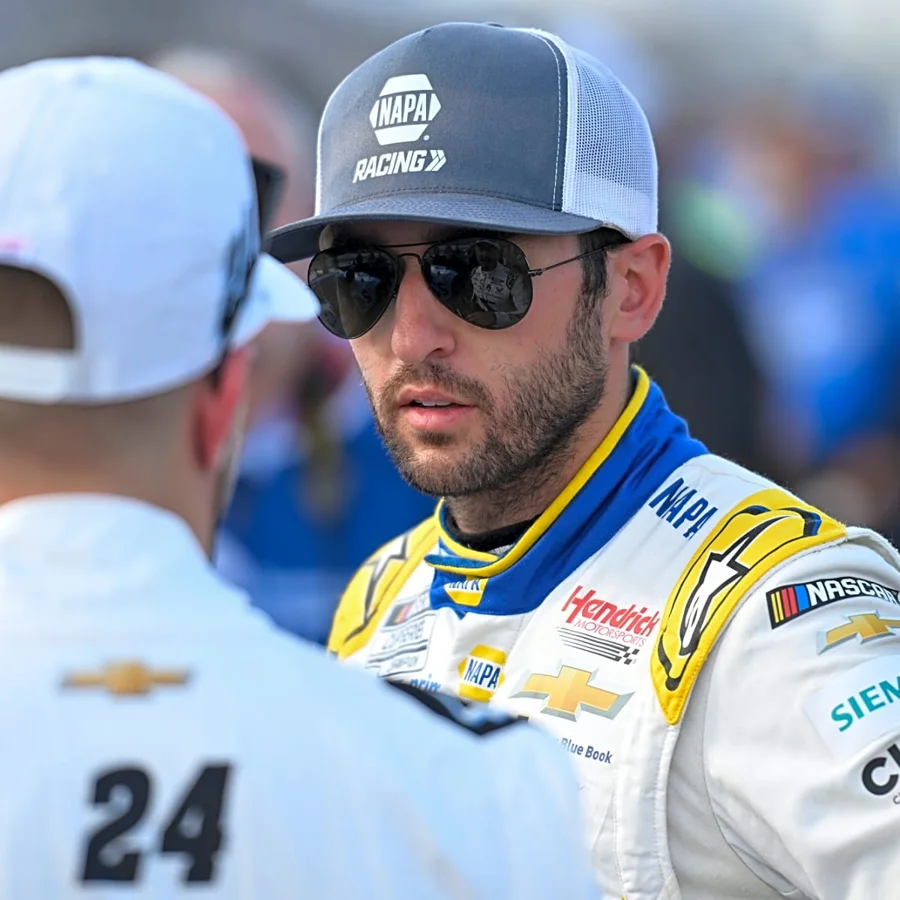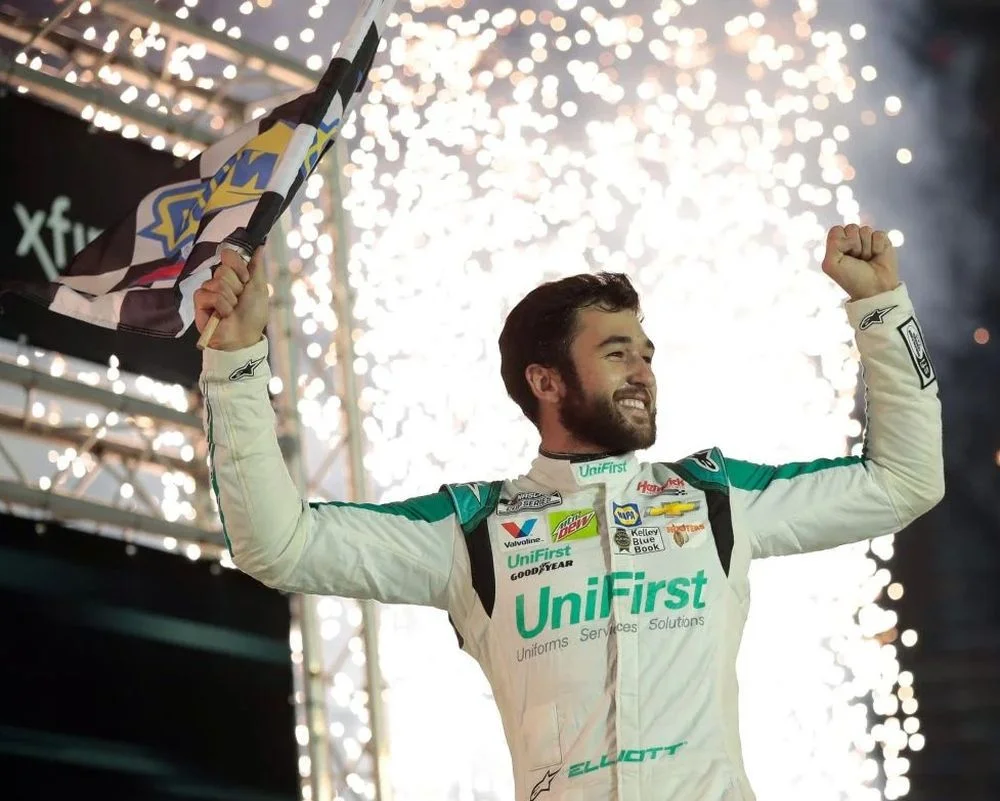Chase Elliott’s playoff mindset was tested during a dramatic and chaotic NASCAR playoff event at Bristol, where a late-race collision threatened his postseason hopes. Despite the uncertainty that gripped the Texas Motor Speedway crowd and had his team on edge, Elliott’s steady approach allowed him to survive a night filled with tension, ultimately advancing by the slimmest of margins in the NASCAR Cup Series playoffs.
Pressure Mounts for Hendrick Drivers at Bristol
Hendrick Motorsports entered the Bristol race weekend with four drivers—Kyle Larson, William Byron, Chase Elliott, and Alex Bowman—all battling for playoff survival. The pressure was visible as the elimination round loomed, creating an atmosphere where anxiety, anticipation, and strategy played out lap after lap. Texas Motor Speedway set the scene for this crucial event in the Wurth 400, with fans and team members alike fixated on every pit stop and every turn.
Tire failures, frequent cautions, and relentless shuffling near the points cutoff line kept nerves stretched thin. In this cauldron, it was Elliott who commanded attention—not for a dominant win, but for the way he handled an abrupt setback. Rather than ending his night with a victory celebration, Elliott displayed a calm demeanor that impressed NASCAR insiders, confirming his status as one of the sport’s composed competitors in high-stakes situations.

Elliott’s Composure Under Playoff Elimination Threat
The Bristol playoff race was a lesson in drama and unpredictability. Elliott’s eventful night took a turn just past Lap 300, where his No. 9 car was caught in a collision involving John Hunter Nemechek and Denny Hamlin. The impact forced Elliott into the outside wall, resulting in his second ‘Did Not Finish’ of the season during one of the most pivotal elimination contests. Despite this blow, Elliott’s season was not over.
Recounting the aftermath, Tommy Baldwin described the visible uncertainty in Elliott’s demeanor:
“didn’t even know if he was in and out of the playoffs.”
—Tommy Baldwin. Elliott openly faced confusion after the early exit, initially thinking his playoff run had ended. According to Baldwin’s account from ‘Door Bumper Clear,’ Elliott admitted defeat and was mentally preparing to pack up.
However, the playoff picture shifted as crucial late-race developments unfolded. Key rival Alex Bowman struggled to gain enough points, while Austin Cindric suffered his own setback—fate swinging just enough in Elliott’s favor. In the final count, Elliott held a fragile five-point lead above the cutoff, advancing into the Round of 12 and continuing his playoff journey.
The Mindset That Sets Elliott Apart
The secret behind Elliott’s ability to weather adversity comes down to a focus on the present and a refusal to let distractions erode his concentration. His philosophy was best summarized by Jeff, who stated:
“I’m just going to go do the best I can and whatever happens, happens. And that’s his mentality.”
—Jeff. This captured Elliott’s method: controlling only what he can, leaving the rest to unfold as it will.
Driving with this attitude, Elliott has learned to trust the calculations and strategies devised by his Hendrick Motorsports team, freeing his mind to focus on execution. This level-headedness, seldom seen amidst the constant pressure and unpredictability of the NASCAR playoffs, has become a hallmark of his driving style. Elliott’s approach not only earned him respect inside the garage but also kept his championship aspirations alive when they seemed most at risk.
High-Stakes Crash Triggers Debate
The main flashpoint in Elliott’s playoff race came on Lap 311, when a three-car incident with John Hunter Nemechek and Denny Hamlin galvanized debate throughout the NASCAR community. Fans and analysts quickly pointed fingers, with social media abuzz over who was responsible for ending Elliott’s night early. Denny Hamlin, a veteran at Joe Gibbs Racing, found himself at the center of these accusations yet insisted on clarifying his role.
Hamlin firmly disputed any claims of wrongdoing, explaining,
“I was not responsible for the contact that took out Chase Elliott,”
—Denny Hamlin. He went further, offering his view of the sequence:
“What it looked like happened is the 9 tried to get in a hole, and he was running significantly slower than the cars running the bottom. John Hunter didn’t see it coming or didn’t check up in time…he hit him, and when he hit him, he stopped in front of me, so I then hit him.”
—Denny Hamlin. This account positioned Hamlin as reacting to an unavoidable chain of events, with Nemechek instigating the contact and Hamlin colliding secondarily.
Elliott himself assessed the incident after the wreck, remarking,
“I thought I was clear, back down in line. I visually saw the gap, so I just tried to get back in line. And then yeah, got a huge shot from behind. I’m not sure if John Hunter got pushed in there or wasn’t expecting me to come back.”
—Chase Elliott. Elliott’s comments suggested a racing incident rather than intentional aggression, though the fallout was no less dramatic. Elliott was classified 38th at Bristol but squeezed through to the playoff’s next round, while Hamlin, despite damage and finishing 31st, left as the points leader for the upcoming stage.
The Significance of Elliott’s Calm Approach Moving Forward
This Bristol race served as a revealing chapter in NASCAR’s knockout playoff format, where fortunes rise and fall on a single lap or pit strategy. For Chase Elliott, the episode underscored how a composed mentality and unwavering belief in his team can preserve a championship run even in the midst of chaos. By staying disciplined and trusting crew guidance, Elliott converted what looked like certain elimination into a ticket to the Round of 12.
As the playoffs shift to new venues, the intensity will only escalate for drivers like Elliott, Denny Hamlin, William Byron, and others. The lessons from Bristol—where assertiveness must be balanced with caution, and mindset proves as critical as machinery—will resonate strongly. With his calmness and focus, Chase Elliott continues to prove a steady presence in a season marked by uncertainty, keeping his hopes of NASCAR Cup Series glory alive.

